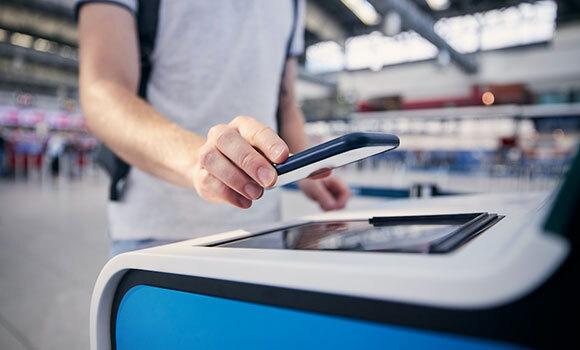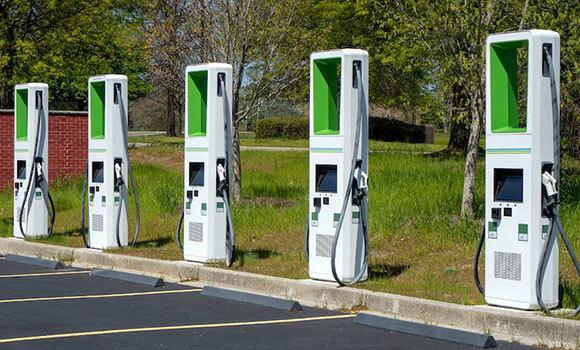

The transportation industry wouldn’t be what it is today without the help of electronic design. Aeroplanes, cars, boats, trains and other modes of transport all rely in some way or another on electronics to keep things running smoothly and to get us and our things from one place to another. Let’s take a look at what electronic design is and how it is shaping this industry.
What is Electronic Design?
Electronic design involves the design, development and production of the electronic hardware that brings products to life. All of the special features and capabilities an electronic product provides are made possible by the hardware that is doing all the work under the surface.
Particularly with more complex applications like those in the transportation industry, it’s often the case that readily available off the shelf (OTS) products won’t do what is necessary. Electronic design involves the creation of completely bespoke electronics that allow more complex and customised applications to be realised.
Electronic designers can be involved in projects that range from quite simple electronic applications with basic circuitry to extremely complicated multi layer PCBs that require a higher level of functionality and therefore testing.
Challenges for the Industry
Technological developments are playing a significant role in the transport industry. Railways, airlines, buses and other public transport as well as a variety of different commercial transport and logistics applications are becoming more and more reliant on electronics and technology to increase efficiency, reliability and safety.
Some of the challenges currently faced by the transport industry in keeping pace with the modern world are:
- Pressures of increasing urbanisation
- Ever-evolving capabilities of automation, machine learning and technology
- Concerns regarding environmental impact
- Increasing expectations of the consumer
The electronic systems that support the transport industry are therefore becoming more complex and the challenges the industry creates require ever more sophisticated electronic design solutions.
As a result the transport industry needs to partner with experienced and responsive experts in electronic design to keep pace with environmental and safety requirements while simultaneously providing an efficient and competitive service to the public, the government or large corporations.
The transport industry brings its own unique challenges when it comes to electronic product design.
Some of the key issues for rail and transportation with regard to electronic design are:
- Requirements for functional reliability even when operating in harsh environments
- The need to perform to exact specification (for example in regard to the Rail Industry Association)
- Necessity to minimise or eradicate maintenance requirement to maximise uptime
- Designing for resistance to vibration, shock and extreme temperatures
- Ensuring cost efficiency in overall project delivery
- Reliability in ensuring project deadlines are met
- Continuing engineering and production support for the lifetime of products
As transport applications are frequently rolled out on a national or sometimes even global basis, project management of the electronic design process is as important as the solutions themselves.
For instance changing the ticketing system of every station in the UK is a significantly more demanding and lengthier project than updating the ticketing for a single entertainment company. Downtime needs to be limited, testing beforehand needs to be extremely thorough and the whole process managed meticulously.
Electronic Design Applications

It’s no exaggeration to say that electronic design has played a huge role in transforming the transport industry.
Using the ticketing system again as an example, look at how ticketing has changed from cash and paper tickets, then electronic payment and reusable cards (e.g. Oyster and Smart cards) and now Smartphones and watches.
Another example is how some companies are now able to deliver products to consumers on the same or next day – a decade or so ago this would have seemed impossible. Electronic design has allowed for transport logistics to take a huge leap forward.
There are also now more than 42,000 electric vehicle charge point connectors across the UK. This is more public places to charge EVs than there are petrol stations, which is a big change considering how few there were only a short while ago. This is having a huge impact on the automotive industry.
The Future
Here are some of the issues the transport sector is facing as we look to the future, all of which will need a range of electronic design solutions to tackle them:
- Reducing greenhouse gas emissions – the industry will be working on emphasising cleaner solutions that limit carbon emissions and gasoline, turning to renewable energy alternatives instead.
- Preventing fatalities – working with new technology to come up with solutions that make both driving and public transport safer.
- Road congestion – transportation technology needs to reduce congestion by considering alternatives to traditional roads.
- Security – new technologies also bring with them new security risks, and solutions will also need to ensure that they can’t be hacked and used for nefarious means.
- Speed – new technology will hopefully be developed to reduce wasted time spent commuting, making travel quicker and more efficient by travelling at high speeds as well as reducing congestion.
The transport sector will become more and more exciting as new technology continues to evolve.
Here are some of the areas in which electronic design is likely to play a significant role in changing the transportation sector and creating new solutions to the challenges above, some of which are already being implemented:
- IoT (the Internet of Things)
- Artificial intelligence
- Blockchain (to optimise supply chain management)
- Virtual reality and augmented reality
- Electrification of sea and air travel
- Autonomous vehicles
- Drone air deliveries
- Last mile delivery
- Use of big data
DSL and the Transportation Industry
DSL is excited to play a role in how electronic design shapes this industry.
Some examples of our specialist electronic design services offered to the rail and transport industry on past projects are:
- Systems engineering
- Electronic design
- Prototyping
- Production
- Compliance testing & verification
- Software services
- Obsolescence management
The transport sector is constantly evolving and electronic design plays a huge role in this. DSL is delighted to be a part of this industry and to offer our expertise and experience in providing custom designed embedded solutions for a variety of specialist applications. We are committed to delivering innovative and reliable solutions that help make the transportation industry more efficient, safe and sustainable.

